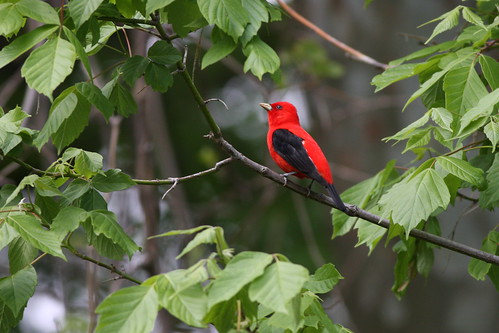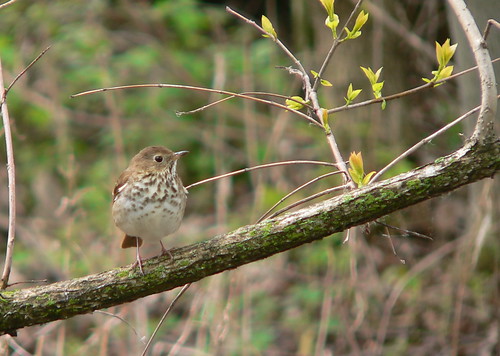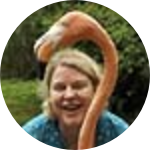About This Project
Across North America, close to 1 billion birds are killed each year as a result of window collisions. Birds often crash into windows because they see the reflecting trees and sky, but not the glass. This project will collect data to gain a better understanding of bird-window collisions in a suburban setting. Yes, we can save birds from flying into windows - we just need to educate people and empower them to take action.Ask the Scientists
Join The DiscussionWhat is the context of this research?
This project builds upon a pilot project that began in October 2013. In the first 3 weeks of that survey, we identified 20 birds, representing 11 different species, that died as a result of flying into windows. Funding will help expand this effort and investigate the year-round impact windows have on our migratory birds at a suburban office park.
As a result of the pilot project, we became aware of the opportunity to survey each building daily. With a minimum of 21 buildings to survey, conducting daily surveys is a large effort to coordinate. During our pilot survey, documentation of window collisions was impeded by a high incidence of scavengers (e.g. raccoons, crows, feral cats, skunks, etc.). Birds that die as a result of a window collision often do not stay at that location very long. That makes it important that we are quick and survey every day.
What is the significance of this project?
Of the many threats to our declining migratory birds, we can reduce the incidence of avian mortality due to window collisions. More work is needed to educate the public and building managers so we can work together to solve this problem.
Considerable research has been conducted in large cities such as New York City (NY Audubon Project Safe Flight) and Toronto (The Fatal Light Awareness Program) with regards to bird collisions and high rise buildings. There is a great need to learn more about the impact smaller office buildings (often in suburban settings) have on migratory birds. Research is progressing with regard to bird friendly glass, however, we need to find solutions for the millions of windows currently installed. Many options for existing windows work well on a residential level, but may not be the best fit for commercial use.
An essential component of this project is the involvement of undergraduate students. Without a doubt, student volunteers made our pilot project a success. We had 8 undergraduates and 2 recent graduates participate. Majors ranged from dairy science to mechanical engineering. They all share a love of birds and wildlife and were moved to volunteer because they had not heard of this issue. As we expand, more students will participate in this research!
What are the goals of the project?
The goals of this project are to:
1. Reduce avian mortality.
2. Expand student involvement.
3. Document the year-round occurrence of bird-window collisions.
4. Identify the most hazardous areas to birds.
5. Investigate the factors that make these areas more hazardous.
6. Take action and test strategies to eliminate and/or reduce the occurrence of collisions.
Donors will receive weekly updates with pictures and student perspectives. We will also provide ways for interested donors to begin a similar project in their neighborhood. Finally, if this study is published, I will acknowledge every donor in the publication.
Budget
Field technicians will receive support through a microryza fellowship. They will conduct surveys, help train volunteers, and assist with bird and feather identification.
Student volunteers will receive "The Sibley Field Guide to Birds of Eastern North America" and "Bird Feathers: A Guide to North American Species" to enhance their general knowledge of birds and aid identification.
The money raised will also help us test solutions with the purchase of window films, paint, screens, or other protective covering for windows.
If you wish to donate by check, please make it payable to Microryza and send to the address below. You can specify "bird-window collisions" in the memo.
Microryza
346 1st St. #307
San Francisco, CA 94105
Endorsed by
Meet the Team
Team Bio
I still remember how ornithology class at Purdue opened up the world of birds and bird songs to me. I first fell in love with studying birds during a summer job nest searching in West Virginia as an undergraduate. My poor parents drove me from Missouri to West Virginia listening to nothing but a tape of eastern U.S. bird songs (the Chestnut-sided Warbler was my Dad's favorite). After graduation, I worked in eastern Montana on a similar study, but with grassland birds. Since then, in my 14 years with the Conservation Management Institute at Virginia Tech, my work involves avian ecology, natural resource inventory and monitoring, and conservation plans and assessments. My research interests are avian ecology, ecological restoration, and sustainable development.Please check out the blog that has documented our pilot project:
http://birds-and-windows.blogspot.com/.
If you have any questions, please do not hesitate to contact me: beckymurray44@gmail.com
Press and Media
WVTF report:
http://wvtf.org/post/hope-has-wingsThe Appalachian Mountains Joint Venture:
Featured our project in their fall newsletter:http://us5.campaign-archive2.com/?u=0794d21dd3be09...
Follow me on twitter:
@beckyms44Additional Information
Here are a few species we've documented as window casualties:
 Scarlet tanager |  Hermit thrush |
 Golden-crowned kinglet |  White-throated sparrow |
Project Backers
- 20Backers
- 100%Funded
- $1,784Total Donations
- $93.90Average Donation



